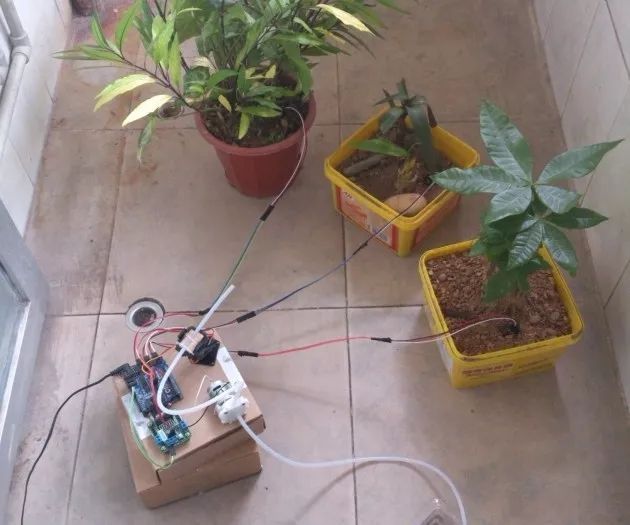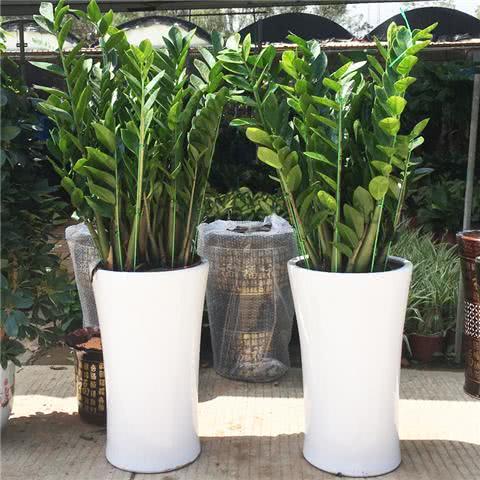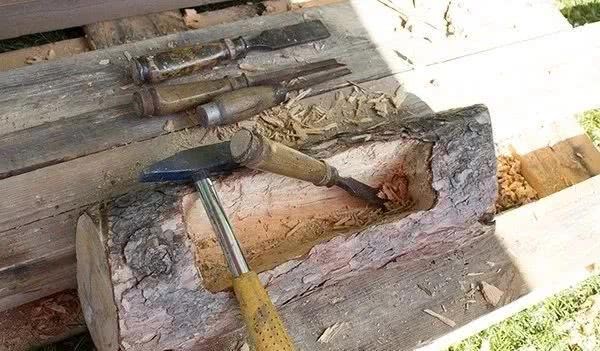Making automatic drip Irrigation system with simple hose plants and flowers can replenish water automatically

Whether it is indoor or outdoor cultivation of plants can use automatic watering system, even if occasionally forget to water it does not matter, you can have to raise flowers more easily, but also can save a lot of time, with some hose can be made, do not need to spend too much time, let's see how to make it.
The yard below is facing south, the sun is particularly abundant, but the family has been busy with work, do not have so much time to take care of, do not have time to take care of plants, in here arrange some hoses, install some automatic water supply devices, can automatically water.
Before planting some vegetables in the yard, it needs to be watered frequently in the hot summer, sometimes even in the morning and evening. Frequent watering will be very difficult.
Let's try the automatic watering device together and make some simple drip irrigation systems so that plants and flowers can be automatically watered.
Just make some small nozzles, buy hoses will be relatively simple, but the timer will be slightly more expensive.
Here are the materials to prepare for making automatic drip irrigation systems. Go directly to the hardware store to buy drip irrigation kits, mainly some hoses, pressure regulators, irrigation drippers and timers for drip irrigation.
Automatic drip irrigation system can also reduce pests and diseases, because if I often water plants, it will inevitably water on the leaves and flowers, and long-term accumulation of water on the leaves will easily cause fungal diseases, which will lead to plant rot.
The manufacturing process is also very simple, directly connect the connector to the faucet, hose and socket connection, the next is to connect the pressure regulator, reinstall the faucet hose connector can be.
The next step is to connect the other end of the hose, making sure that no water leaks out, of course, before connecting the hose, you need to ensure that the distance from the drip irrigation head is very simple.
The next step is to measure the length of each tiny hose until the tube directly penetrates the potted plant, of course, to reserve a little position, to avoid pulling the hose too straight, otherwise it will affect the dripping effect.
Drip lines can then be installed, and holes can be drilled directly with dropper hole punches, after which micro drip lines can be added.
Installing the drip emitter is very simple, basically just insert it into the open end of the hose, and finally bury the hose slightly in the soil and hide it properly.
The next step is to connect the drip line connector to the main pipe, and then connect the microhose to the other end.
The last step is to set the timer for automatic irrigation. We set the timer at the beginning of the hose and let it water regularly. Once the automatic drip irrigation system is set, it will automatically run.
Check regularly afterwards to make sure the plants are getting the right amount of moisture. If it's rainy you need to turn off the drip timer and increase the frequency of watering when it's dry.
Automatic drip irrigation systems can pour water directly onto the roots of plants, thus avoiding long-term accumulation of water on the leaves and preventing black rot and leaf spot disease.
What do you think of this idea? If you have some hands-on ability, you may wish to try it.
- Prev

Raise the money tree well and teach you 4 tricks. The leaves are thick and green.
The auspicious meaning of the money tree means that it symbolizes prosperity just by listening to the name. Want to raise the money tree, master the correct management methods, the following editor to take a look at the maintenance methods of the money tree! The management method of money tree (1).
- Next

There are 10 succulent plants made of wood made by Huayou. Potted wooden stakes change into plant landscape.
I have seen different ideas in different horticultural shops, and florists use all kinds of materials of life to make potted plants. Discarded wood can be transformed into potted containers, and wood can be drilled and used.
Related
- Wuhan Hospital Iron Tree Blooming Result Was Instantly Frightened by the Gardener Master
- Which variety of camellia is the most fragrant and best? Which one do you like best?
- What is the small blue coat, the breeding methods and matters needing attention of the succulent plant
- Dormancy time and maintenance management of succulent plants during dormancy
- Minas succulent how to raise, Minas succulent plant pictures
- What are the varieties of winter succulent plants
- How to raise succulent plants in twelve rolls? let's take a look at some experience of breeding twelve rolls.
- Attention should be paid to water control for succulent plants during dormant period (winter and summer)
- Watering experience of twelve rolls of succulent plants
- Techniques for fertilizing succulent plants. An article will let you know how to fertilize succulent plants.

